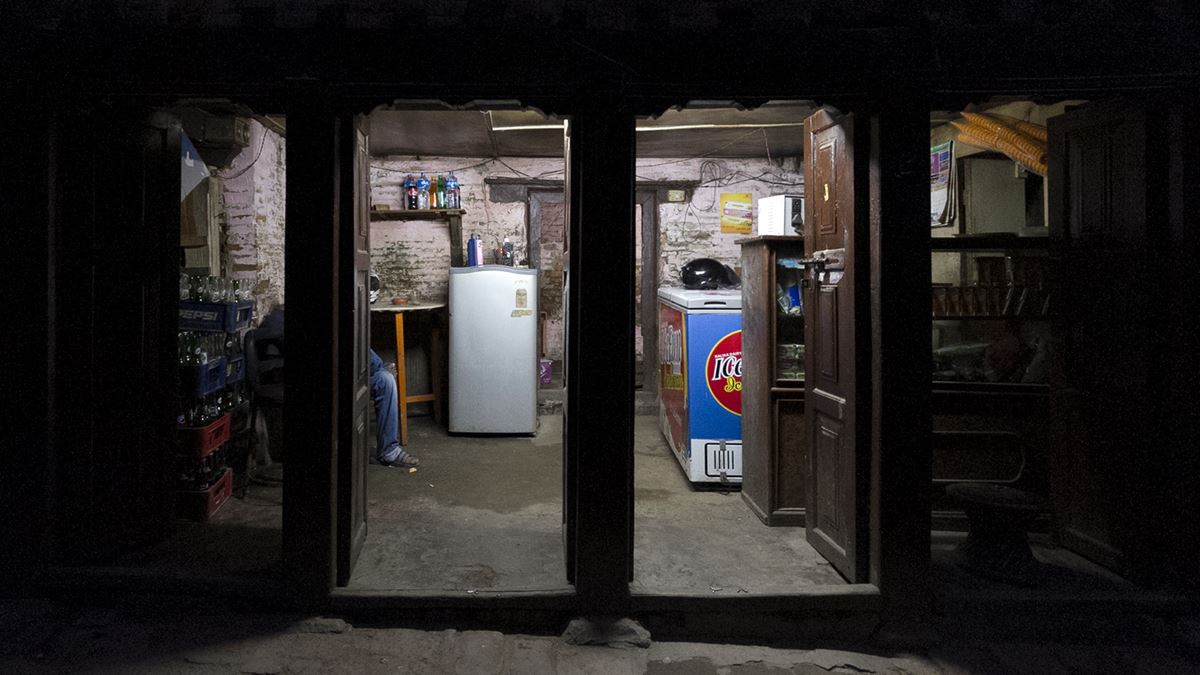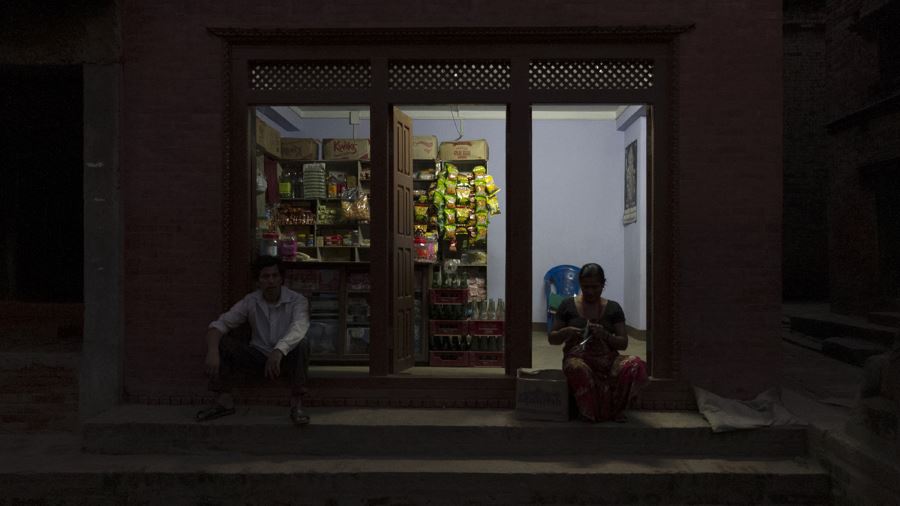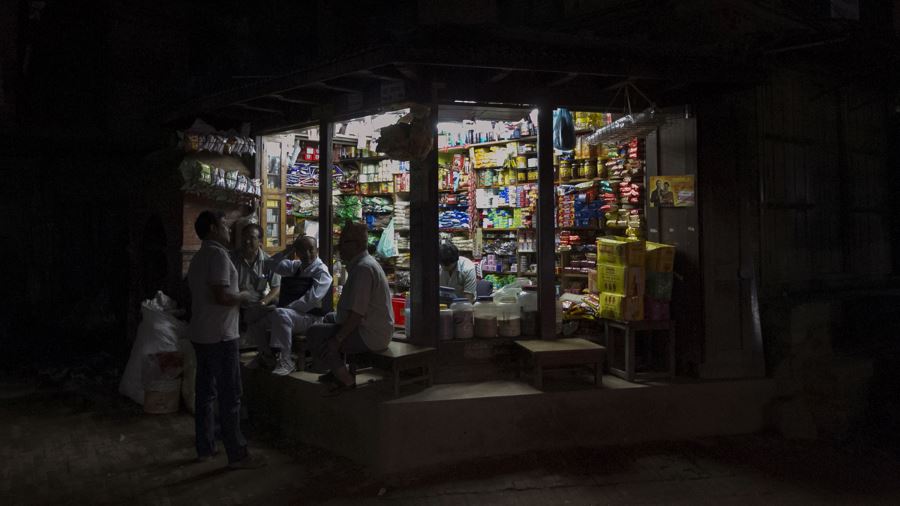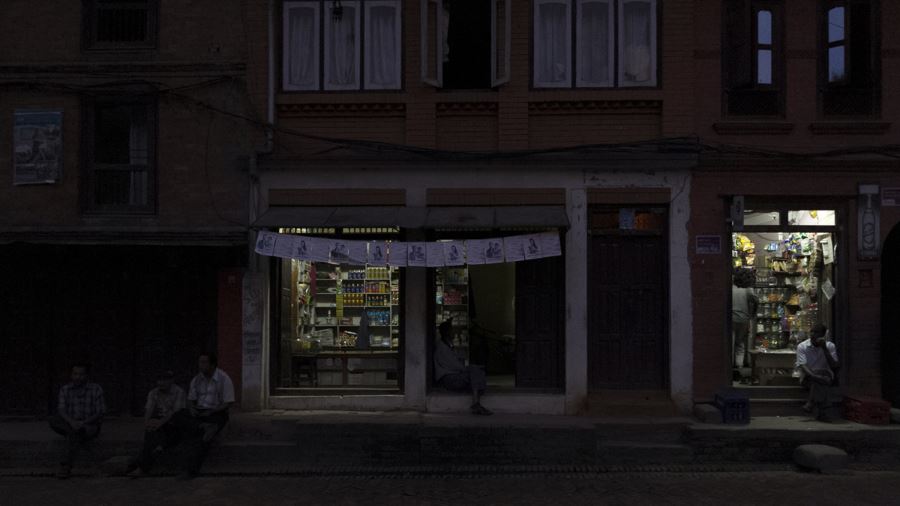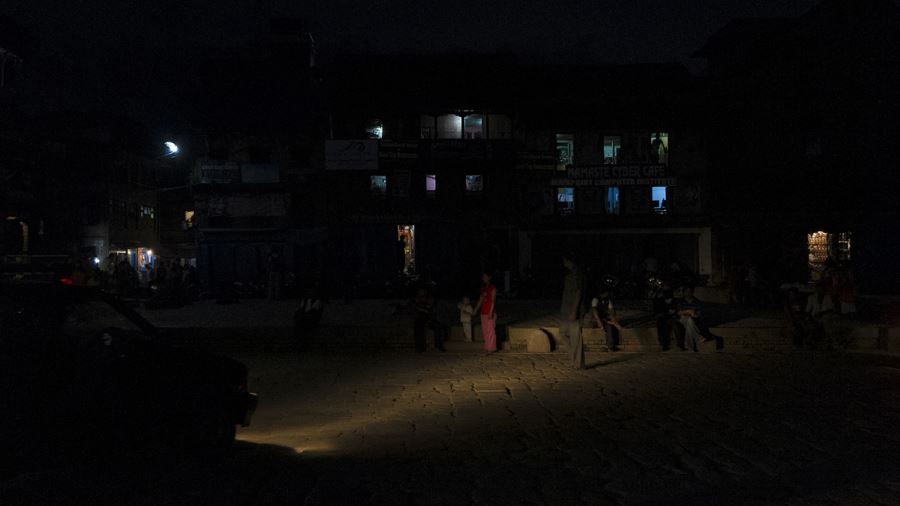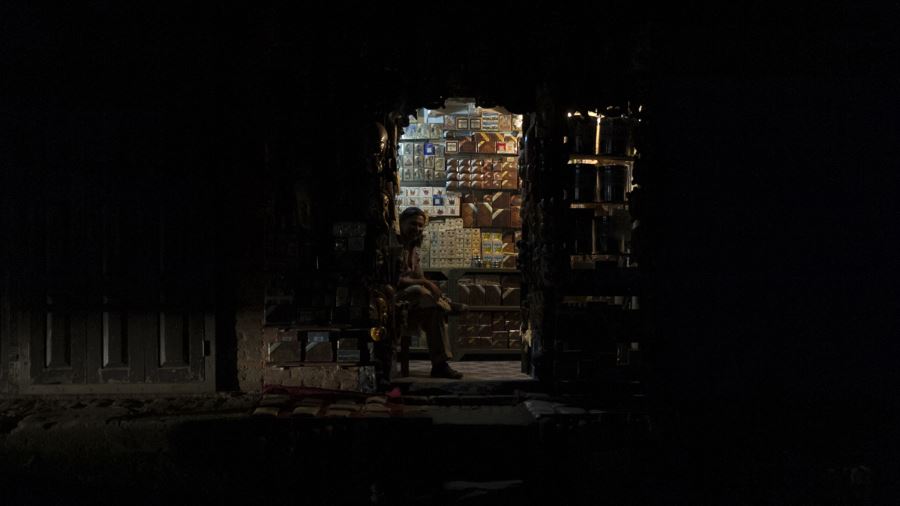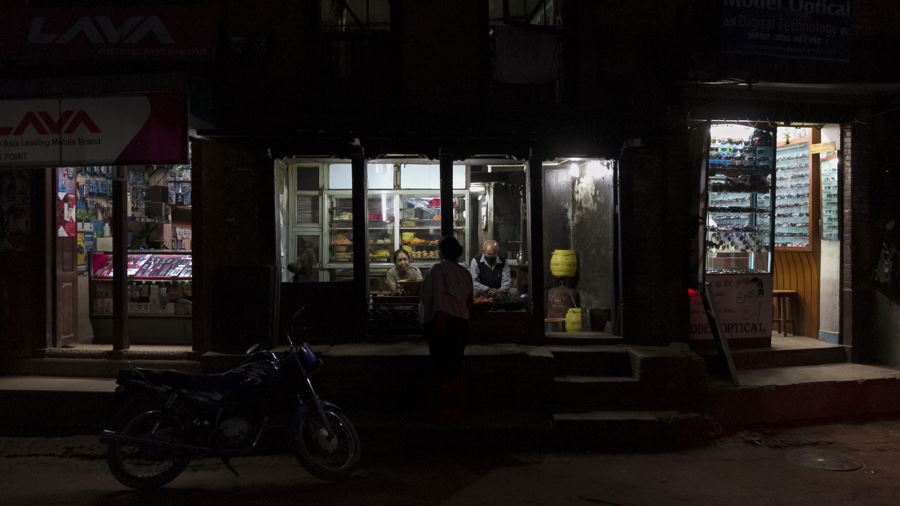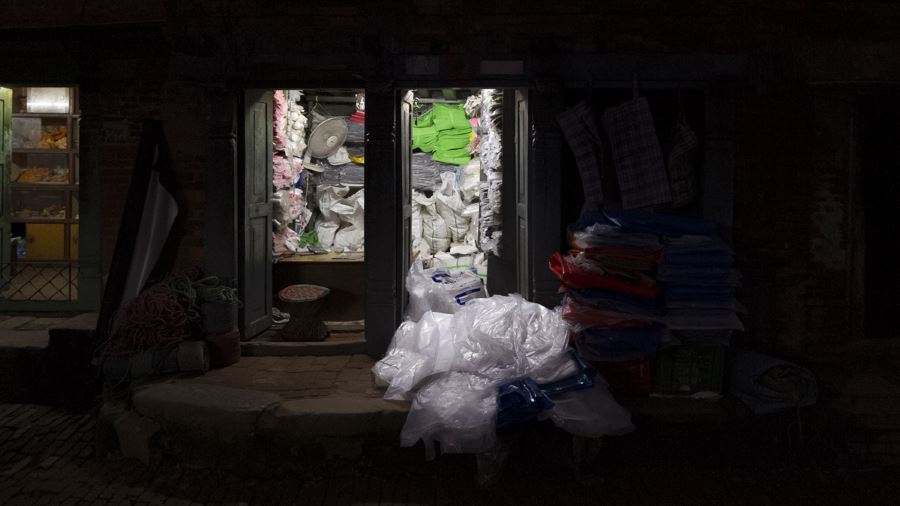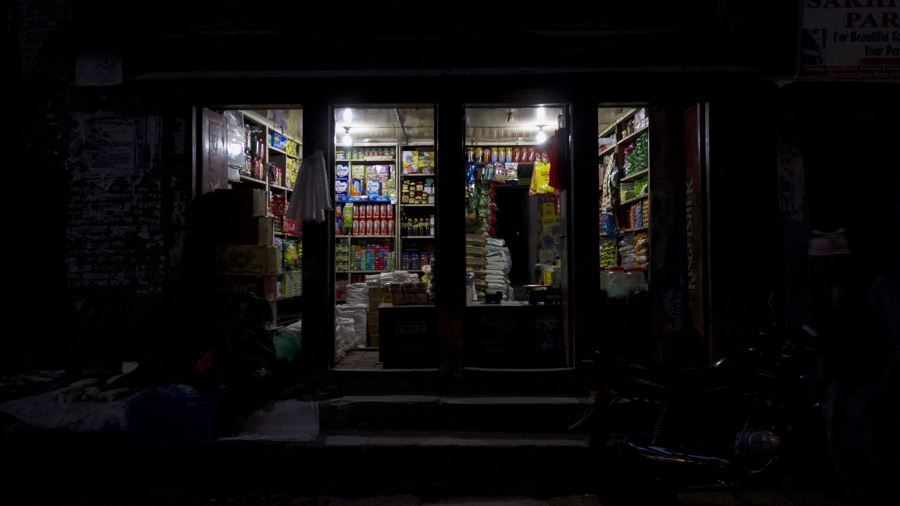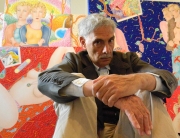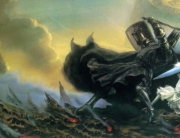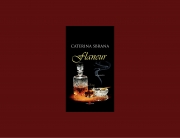La fotografa Marta Gobbi racconta la città nepalese di Bhaktapur mediante il dialogo tra luce ed ombra.
Bhaktapur è, dopo la capitale ed insieme a Patan, il centro abitato più noto e visitato della valle di Kathmandu. Considerato ormai una sorta di settore della metropoli nepalese, in origine costituiva la vera capitale del regno: sorta nel nono secolo dopo Cristo, raggiunge il suo apice nel diciottesimo, ed è oggi un perfetto esempio di architettura e cultura Newari.
La città è stata scelta da Bertolucci come set per il suo capolavoro ‘Il Piccolo Buddha‘, grazie alle suggestioni che era riuscita a destare nel regista durante un viaggio negli anni ’70. All’epoca, Kathmandu, Patan e Bhaktapur erano meta di un moderato turismo ‘hippy’, rispettoso di ciò che rappresenta l’essenza e l’identità del Nepal: nei decenni successivi queste località sono diventate progressivamente sempre più popolari, attirando un turismo che rischia di sconfinare in una degenerata occupazione del suolo nepalese, snaturando la genuinità di un Paese e di un popolo portatori di tradizioni millenarie.
Bhaktapur è riuscita a mantenere quasi intatta la sua essenza, grazie anche alla scelta di proibire l’accesso alle automobili e alle moto nel suo centro più antico ed evocativo, intorno a Durbar Square. Purtroppo il terremoto del 2015 ha danneggiato in gran parte i siti storici del Nepal, e tra questi molti sono proprio nella Durbar Square di Bhaktapur: l’opera di ricostruzione è in moto, ma le difficoltà sono numerose e legate soprattutto alla mancanza di fondi e manodopera. Già nel 1934 un terremoto aveva provocato danni simili, e solo negli anni ’70 un’azione sinergica internazionale, grazie al contributo tedesco, era riuscita a riportare i siti storici ai fasti che merita un luogo così importante per i nepalesi e per il pianeta, tanto da essere riconosciuto come Patrimonio dell’Umanità UNESCO.
Il lavoro della fotografa Marta Gobbi è uno sguardo alternativo e acuto sulla Bhaktapur più genuina e davvero nepalese, lontano in questo caso dalle principali attrazioni turistiche. Riesce a raccontare la città mediante la luce, e la mancanza di essa: lo strumento principale della fotografia diventa quindi oggetto e mezzo dell’opera fotografica, fondendo fruitore ed artista alla scoperta di un aspetto così peculiare, fondamentale per comprendere la vita a Bhaktapur.
Quando cala la notte, infatti, non esiste nella città alcuna forma di illuminazione pubblica: le uniche fonti di luce sono quindi le poche attività aperte, gli usci delle abitazioni, i fanali di auto e motociclette che passano rumoreggiando ed illuminando per pochi momenti, come lampi.
Al contempo, i negozi e le poche aree illuminate diventano oasi di incontro umano, punti di ritrovo spontanei nell’affascinante dedalo di vie buie, in cui il visitatore – a volte un po’ inquieto – non riesce a discernere le fonti dei ciechi rumori che avverte. Quando però la luce riesce a fendere il buio, si rassicura vedendo che magari era solo seguito da un paio di cani randagi, che nella notte diventano tra i principali viandanti delle strade di Bhaktapur. Oppure, se riesce a farsi luce con una piccola torcia si accorgerà di trovarsi a ridosso di una statua leonina induista, o davanti alla gradinata di uno dei grandiosi templi della Durbar. L’inquietudine diventa allora rapimento e stordita ammirazione.
Negli illuminanti scatti di Marta Gobbi, gli abitanti della cittadina e le loro attività sono protagonisti inconsapevoli, su di un palco che è costituito da tutte quelle oasi in cui la luce ha ancora la meglio: a pochi metri dall’eredità millenaria e senza tempo del sito patrimonio UNESCO, o talvolta direttamente dal suo interno, vediamo lo scorrere quotidiano di coloro per cui Bhaktapur è nient’altro che casa.
Andhakāra – अन्धकार (testo in inglese)
Bhaktapur is one of the most populated towns of the Kathmandu Valley, right after the Capital regarding the number of inhabitants and is approximately as big as Patan. Once considered as the de facto center of the kingdom, today it’s seen as a Nepali metropolis.
The first center was founded around 800 a.C. Gradually the city grew bigger and reached its peak during the 18th century, acquiring the perfect mixture of architecture and Newari culture we still see today.
Bertolucci, whose masterpiece “Little Buddha” is set in this city, already had the chance to visit the region during the 70’s and from that point on his career was somehow influenced by its atmospheres. At that time, Kathmandu, Patan, and Bhaktapur were gaining a certain popularity among hippies, who still respected the identity and culture of these places: during the years, their exposure to mainstream tourism brought the risk of a degeneration of their original values and millennial traditions, becoming more and more contaminated with western myths and culture.
Nevertheless, Bhaktapur has managed to preserve its integrity, partly thanks to the auto and motor ban within the boundaries of its ancient center, near Durbar Square. Unfortunately, a massive earthquake in 2015 destroyed a great part of Nepal’s historic sites – Durbar Square in Bhaktapur among others. The ongoing reconstruction encountered some difficulties mostly related to the lack of funds and manpower. Another earthquake undermined the city back in 1934 and only an international cooperation led by German investors managed to restore the magnificence of the ancient sites. These areas are an important part of our planet’s history and Nepal’s identity, enough to be listed as a World Heritage Site by UNESCO.
Photographer Marta Gobbi gives a different and lucid perspective on Bhaktapur authenticity, moving the focus far from the usual touristic attractions. She managed to capture the city’s atmosphere through the light (and its absence): being the core tool of photography, light is both an object and a mean of the oeuvre, used to merge viewers and artists in their discovering of such an intimate piece of Bhaktapur life.
There’s no such thing as street lighting after nightbreak: beams of light occasionally come from late night shops, houses, lamps on motorbikes and cars – rumbling and flashing like thunders as they pass by.
At the same time, shops and a few lit areas become the oasis of human encounters, meeting points in the maze of dark alleys where visitors – sometimes a bit worried – do not always detect sound sources. When lights pierce the dark, they feel relieved, noticing just groups of stray dogs, which fill the streets at night. Eventually, with the help of a torch, it’s easy to spot a Hindu statue resembling a dog or the steps of one of the several huge temples in Durbar. The anxiety will be easily turned into mystical admiration.
Marta Gobbi’s enlightened pictures give a main role to the unaware inhabitants and their activities, on a stage set by the sparks of lights still present in the city. Just a few steps away from the millennial and yet timeless heritage of the UNESCO site, we experience the ordinary life of those who see Bhaktapur as home.
Foto di Marta Gobbi
Testo di Umberto De Tomi
*****
Se ti è piaciuto questo articolo leggi anche: Nothing – Marta Gobbi: Foto Gallery.


